Researchers from the German Research Centre for Geosciences discovered that a 2023 megatsunami in Greenland produced a 1-metre oscillating wave that persisted for a week.
From German Research Centre for Geosciences (GFZ) 11/08/24
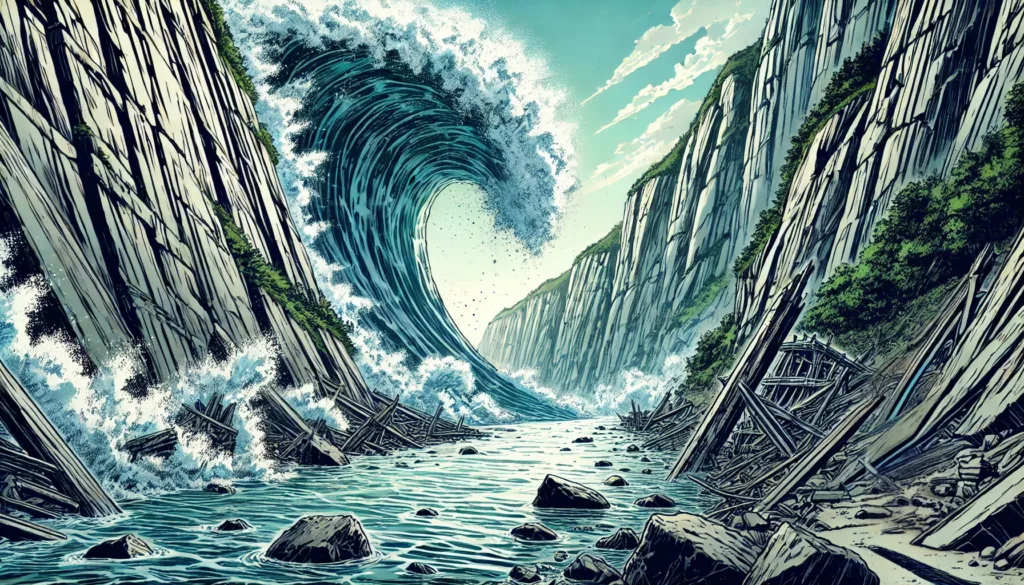
It was a monster wave that hit a fjord on Greenland’s east coast on 16 September 2023.
In certain places, the traces of the flooding reached 200 metres high.
Researchers led by Angela Carrillo Ponce from the German Research Centre for Geosciences (GFZ) have now evaluated the seismic signals from earthquake measuring stations worldwide and discovered another unusual event.
Triggered by the megatsunami, a standing wave sloshed back and forth in the narrow bay of the uninhabited Dickson Fjord for more than a week.
The international team published their work in the current issue of the scientific journal “The Seismic Records”.
Rockslide as triggering event
The tsunami was triggered by a large landslide.
Earthquake measuring stations up to 5,000 kilometres away registered the shaking caused by the landslide as a short signal.
However, there was also a very long-period (VLP) signal that was recorded by the seismometers for more than a week.
Angela Carrillo Ponce, who works as a doctoral student in the “Physics of Earthquakes and Volcanoes” section of the GFZ, says: “The mere fact that the VLP signal of a wave sloshing back and forth triggered by a landslide in a remote area of Greenland can be observed worldwide and for over a week is exciting.
“That’s why we in seismology have been most concerned with this signal.”
Fortunately, the researcher adds, no people were harmed.
Only a military base, which was without personnel at the time of the tsunami, was devastated.
Analysis of the seismic signals – shock waves that travel thousands of kilometers in the earth’s crust – showed that a so-called standing wave formed in the fjord after the landslide.
Initially, the parts of the flank that fell into the water triggered a giant wave that spread through the entire fjord to the offshore island of Ella, more than 50 kilometres away.
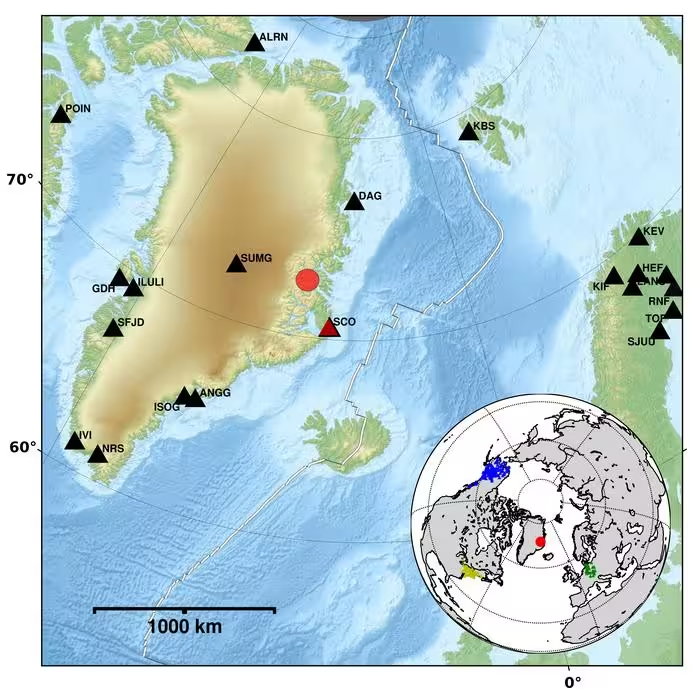
Near the point where the rockslide entered the fjord, the maximum height was more than 200 metres, along the coast an average of 60 meters.
Parts of the wave apparently spilled back from the steep banks in the narrow fjord and a standing wave began to form, which undulated back and forth for more than a week.
However, this wave measured only around 1 metre in height.
Standing wave persisted unusually long
Such standing waves and the resulting long-period signals are already known in research.
Such VLP signals are normally associated with large break-offs from glacier edges.
“In our case, we also registered a VLP signal,” says Angela Carrillo Ponce, “the unusual thing about it was the long duration”.
What was particularly impressive was that the data from seismic stations in Germany, Alaska and other parts of North America were of very good quality for the analysis.
A comparison with satellite images confirmed that the cause of the first seismic signals corresponded well with the strength and direction of the rockfall that triggered the megatsunami.
In addition, the authors were able to model the slow decay and the dominant oscillation period of the VLP signals.
This gives the researchers hope that they will be able to detect and analyze other similar events from the past.
It is obvious that the retreat of glaciers, which previously filled entire valleys, and the thawing of permafrost are leading to increased landslides.
Climate change is accelerating the melting of glaciers and could therefore increase the risk of megatsunamis.
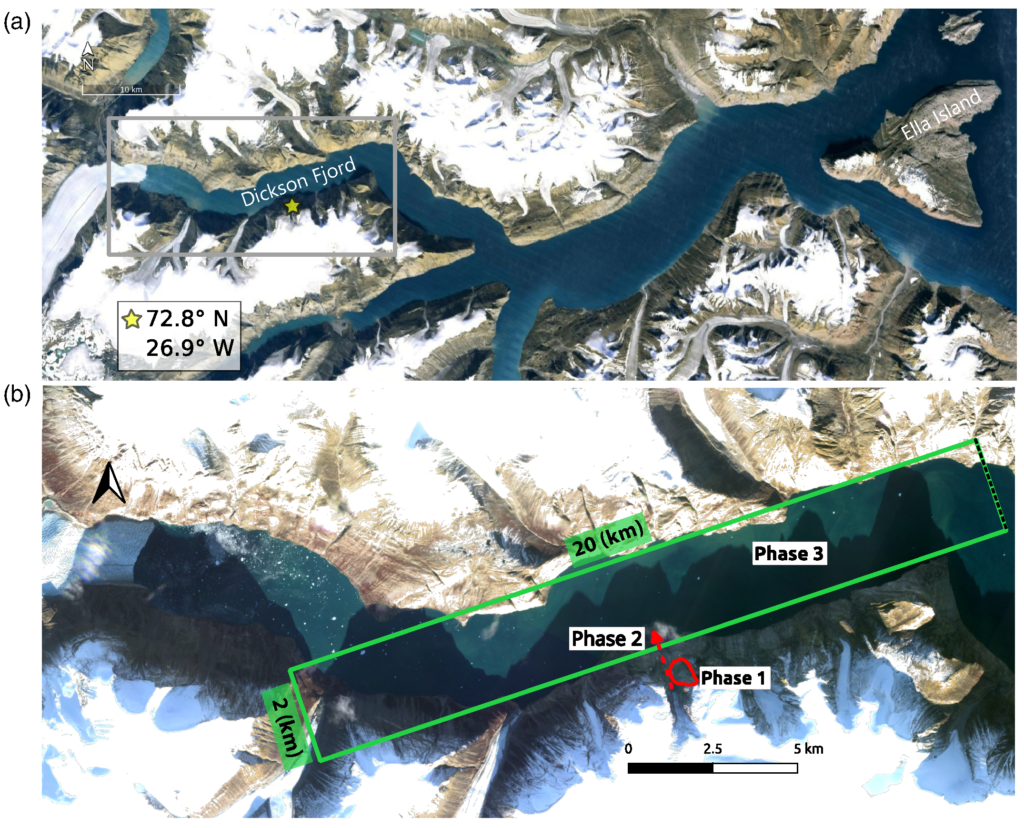
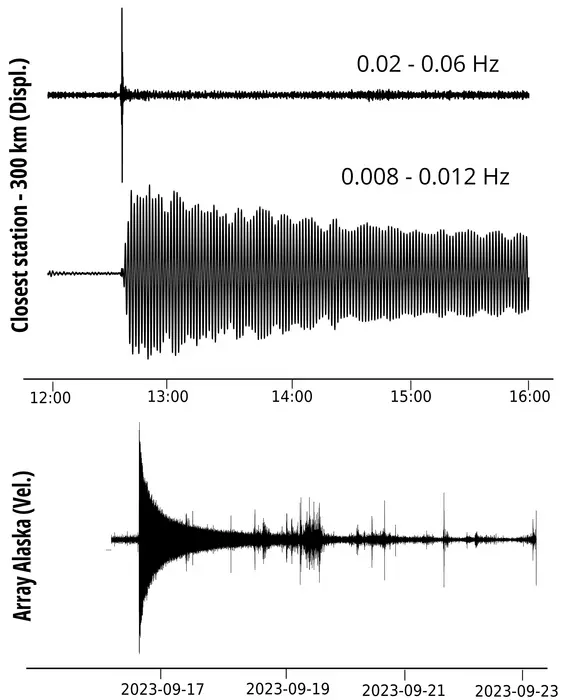
Angela Carillo Ponce et al.
More info
You may also be curious about:
-

The pedal-less e-bike with chunky attitude
-
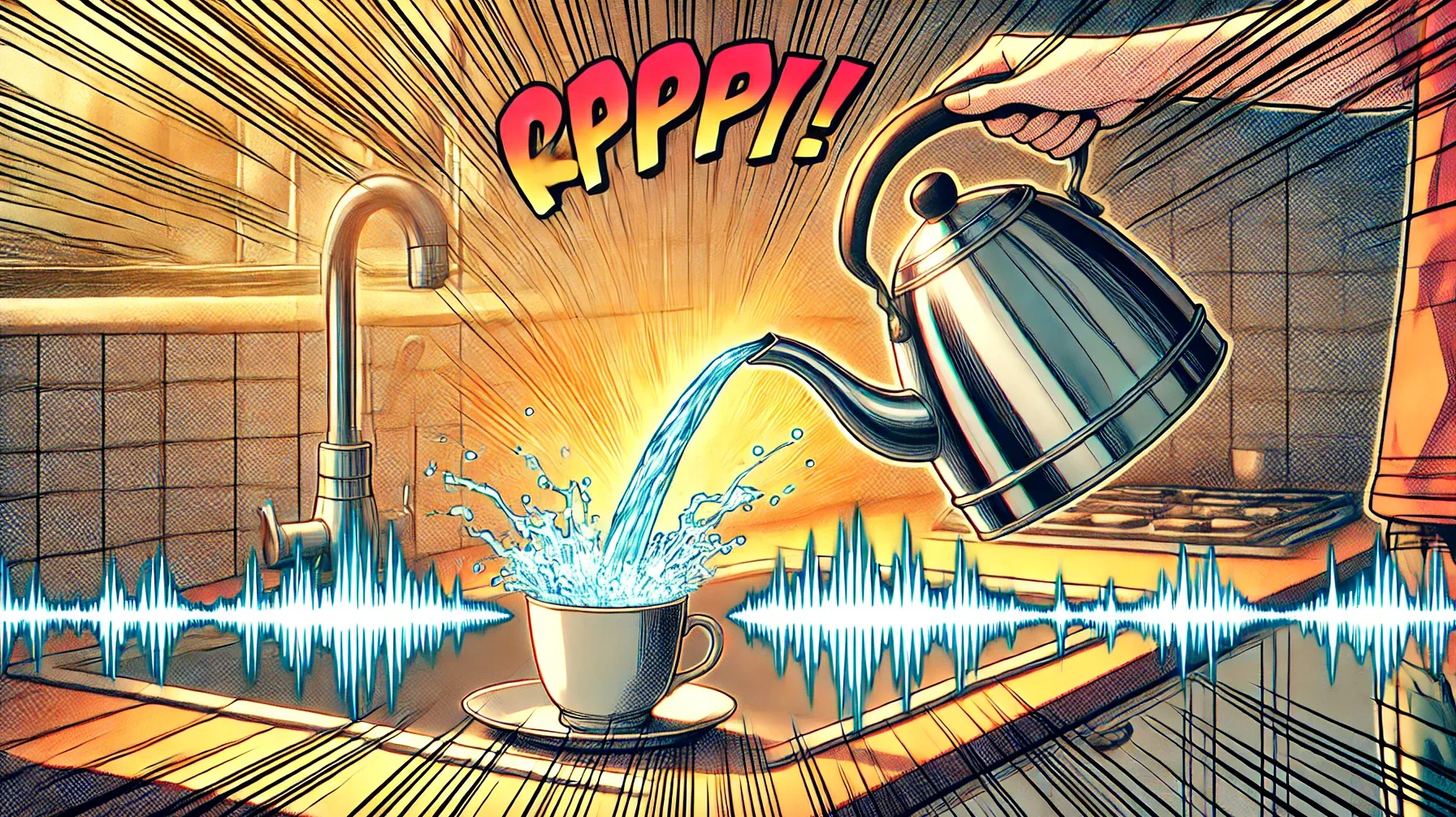
‘Hearing’ temperature: Uncovering a hidden human ability to perceive temperature through sound
-

Zero-tangle dual dog leash with 360 swivel action
-

New X-ray imaging world record shows microchip with 4 nanometre precision
-

Mayonnaise helps researchers dig deeper into stability challenges of nuclear fusion
-
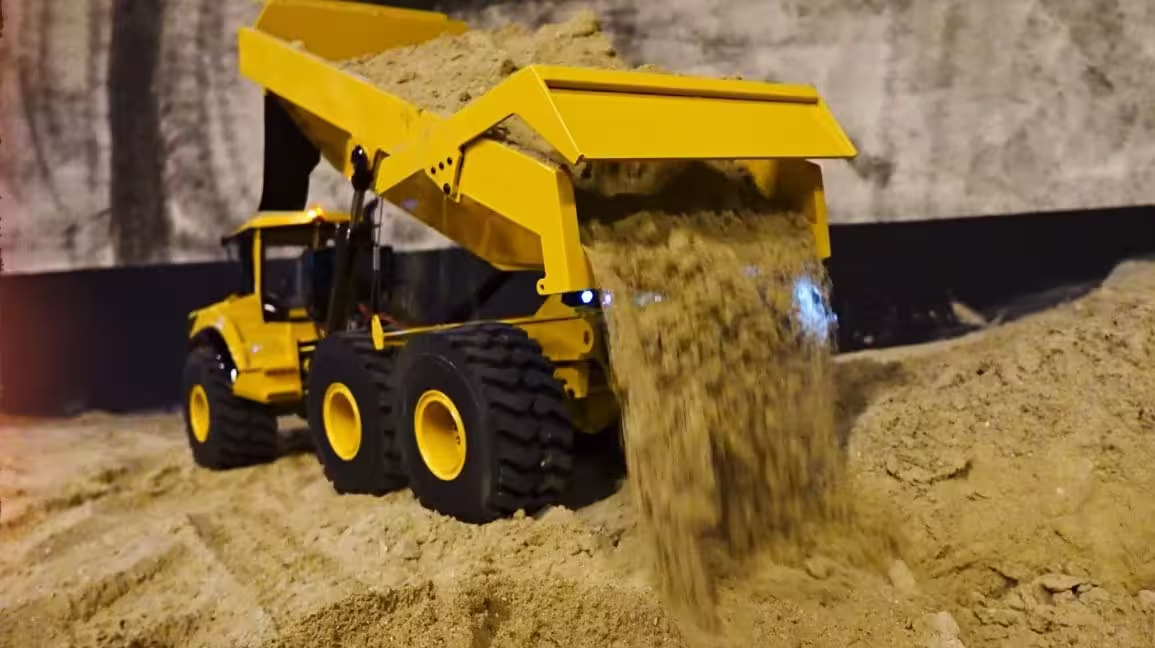
Remote-control digger cafe opens in Dubai
-

Dozing at the wheel? Not with these fatigue-detecting earbuds
-

Preventing heat stroke in tennis: Insights into the heat environments of tennis courts
-

Restored: The 1955 VW camper built to run on rails
-

Laser-equipped mosquito tracker for your home
-

Every rose has its thorns…or does it?

